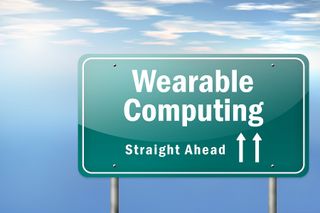Wearable technology: Productivity tool, or spy watches?
Wearable technology is set to be a strong seller over the holiday season, but firms need to consider the security issues

Inside the enterprise: If you were a villain in a Bond movie, you didn't want to be on the wrong end of 007's wearable technology. All too often, the consequences were lethal.
But, although some officer workers might yearn for an exploding watch or a bracelet hiding a poison dart, wearable technology is more likely to be an update on the 1980s' digital watch. Any security issues are, fortunately, likely to be of a less lethal variety.
The question of wearable tech and security, though, is a live one. Organisations already struggle with policing their networks and preventing data loss, especially if they allow employees to use their own smartphones or tablets at work.
Creating a watertight data protection policy, where personal devices are involved, is close to impossible.
Short of an outright ban unlikely to be acceptable in fields outside defence and central government it is hard to prevent employees using a smartphone camera, to take just one example, to capture sensitive data. Then there is the power of modern personal devices: a smartphone can copy even a sizeable company database many times over.
Miniaturisation does pose potential, additional security issues, however. Although there may well be business benefits in using wearable technology the idea of a watch that can conceal or control a camera or a data transmitter is likely to worry CIOs, especially in sensitive industries.
It is one thing to ban the use of cameras or cameras in smartphones; it is quite another to control the use of a device that could, potentially, take a picture at the flick of the wrist. Again, devices that can hook up to a PC and capture data over Bluetooth, or maybe even record or transcribe a conversation, pose a threat to confidentiality.
Get the ITPro. daily newsletter
Receive our latest news, industry updates, featured resources and more. Sign up today to receive our FREE report on AI cyber crime & security - newly updated for 2024.
You don't have to be Bond's gadget maker Q to obtain sophisticated surveillance tools today. A whole range of spy gear, from miniature cameras to hidden microphones, is easy enough to find online. If someone is really determined to obtain company secrets, then they probably will.
The challenge for CIOs is controlling either casual data theft, or accidental data loss. Both of these problems may become worse with wearables.
From a data theft perspective, an employee might be tempted to snap the details of a celebrity customer's records with a watch, in a way they never would with a smartphone, let alone a full-sized camera. When it comes to data loss, if wearables can store company information then they can also lose it too.
A recent study, carried out by Vanson Bourne for Trend Micro, fleshes out some CIO concerns. The firm found that a quarter of companies were rolling out wearables, but 85 per cent thought they did pose a security risk. Almost half of the IT directors surveyed worried about data theft, and a further 34 per cent, about the auto-synchronisation of business data.
Of course, some of these problems can be addressed through policies and education. But maybe CIOs need to take a leaf out of Q's book, and fit wearables with a self-destruct button.
Stephen Pritchard is a contributing editor at IT Pro.




